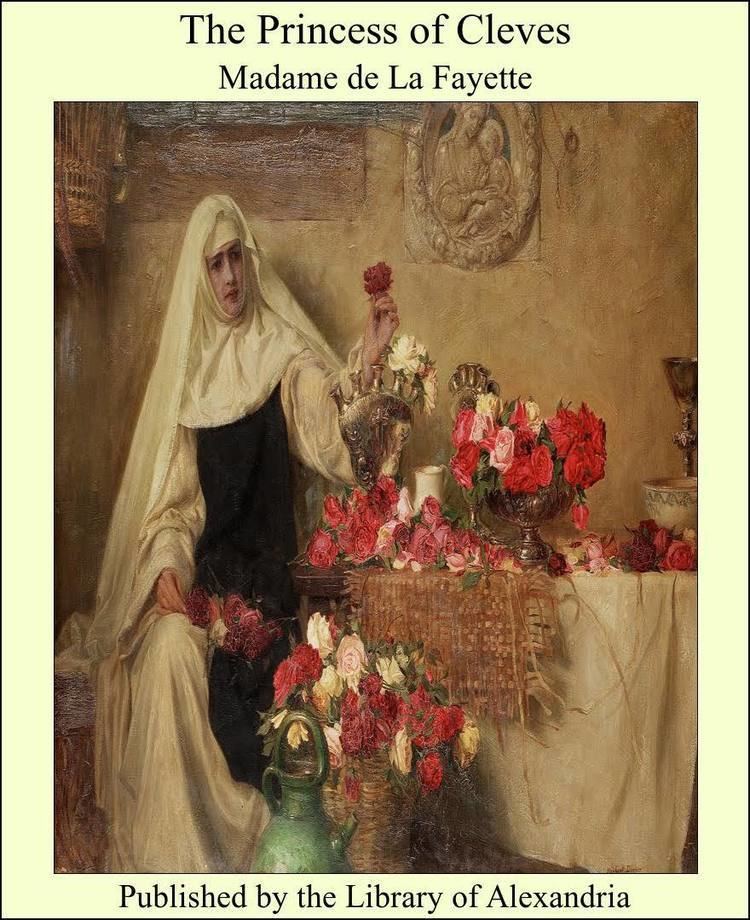6.8 /10 1 Votes6.8
Originally published March 1678 Followed by The Praise of Folly | 3.4/5 Goodreads Preceded by Candide | |||||||||||||||||||||||||||||||||
 | ||||||||||||||||||||||||||||||||||
Classical Studies books Dangerous Acquaintances, Sentimental Education, The Red and the Black, Père Goriot, Madame Bovary | ||||||||||||||||||||||||||||||||||
La Princesse de Clèves is a French novel which was published anonymously in March 1678. It is regarded by many as the beginning of the modern tradition of the psychological novel, and as a great classic work. Its author is generally held to be Madame de La Fayette.
Contents
- La princesse de cl ves madame de lafayette magali montoya
- Plot summary
- Characters
- Contemporary reception
- In popular culture
- References
The action takes place between October 1558 and November 1559 at the royal court of Henry II of France. The novel recreates that era with remarkable precision. Nearly every character – except the heroine – is a historical figure. Events and intrigues unfold with great faithfulness to documentary record.
La princesse de cl ves madame de lafayette magali montoya
Plot summary
Mademoiselle de Chartres is a sheltered heiress, sixteen years old, whose mother has brought her to the court of Henri II to seek a husband with good financial and social prospects. When old jealousies against a kinsman spark intrigues against the young ingénue, the best marriage prospects withdraw. The young woman follows her mother's recommendation and accepts the overtures of a middling suitor, the Prince de Clèves. After the wedding, she meets the dashing Duke de Nemours. The two fall in love, yet do nothing to pursue their affections, limiting their contact to an occasional visit in the now-Princess of Clèves's salon. The duke becomes enmeshed in a scandal at court that leads the Princess to believe he has been unfaithful in his affections. A letter from a spurned mistress to her paramour is discovered in the dressing room at one of the estates—a letter actually written to the Princess' uncle, the Vidame de Chartres, who has also become entangled in a relationship with the Queen. He begs the Duke de Nemours to claim ownership of the letter, which ends up in the Princess' possession. The duke has to produce documents from the Vidame to convince the Princess that his heart has been true. Eventually, the Prince de Clèves discerns that his wife is in love with another man. She confesses as much. He relentlessly quizzes her—indeed tricks her—until she reveals the man's identity. After he sends a servant to spy on the Duke de Nemours, the Prince de Clèves believes that his wife has been unfaithful in more than just her emotions. He becomes ill and dies (either of his illness or of a broken heart). On his deathbed, he blames the Duke de Nemours for his suffering and begs the Princess not to marry him. Now free to pursue her passions, the Princess is torn between her duty and her love. The duke pursues her more openly, but she rejects him, choosing instead to enter a convent for part of each year. After several years, the duke's love for her does finally fade, and she, still relatively young, passes away in obscurity.
Characters
Contemporary reception
The novel was an enormous commercial success at the time of its publication, and would-be readers outside of Paris had to wait months to receive copies. The novel also sparked several public debates, including one about its authorship, and another about the wisdom of the Princess' decision to confess her adulterous feelings to her husband.
One of the earliest psychological novels, and also the first roman d'analyse (analysis novel), La Princesse de Clèves marked a major turning point in the history of the novel, which to that point had largely been used to tell romances, implausible stories of heroes overcoming odds to find a happy marriage, with myriad subplots and running ten to twelve volumes. La Princesse de Clèves turned that on its head with a highly realistic plot, introspective language that explored the characters' inner thoughts and emotions, and few but important subplots concerning the lives of other nobles.
In popular culture
Beginning in 2006, before he became the French president, Nicolas Sarkozy had made some negative comments about the book, arguing that it was ridiculous that civil service entrance exams had included questions on La Princesse de Clèves. As a result, during the long movement of university lecturers in 2009 against his proposals, public readings of La Princesse de Clèves were held in towns around the country. Sales of the novel rose rapidly.
In relation to this, the novel is used by French filmmaker Christophe Honoré for his 2008 film La Belle Personne. The plot of the film roughly follows that of the novel, but changes the setting to that of a modern-day French lycée (high school), thus referencing both the novel and the reason for its contemporary fame.
The novel was also the basis of Jean Delannoy's 1961 film of the same title (adapted by Jean Cocteau), Manoel de Oliveira's 1999 film The Letter, and Andrzej Żuławski's 2000 film Fidelity (starring Sophie Marceau).
The novel was the basis of Regis Sauder's 2011 film Nous, princesses de Clèves, in which teenagers in an inner city school are studying the novel for their Baccalaureate exam.
The novel was dramatised as a radio play directed by Kirsty Williams broadcast on BBC Radio 3 on 28 February 2010 – see La Princesse de Clèves (radio play).
